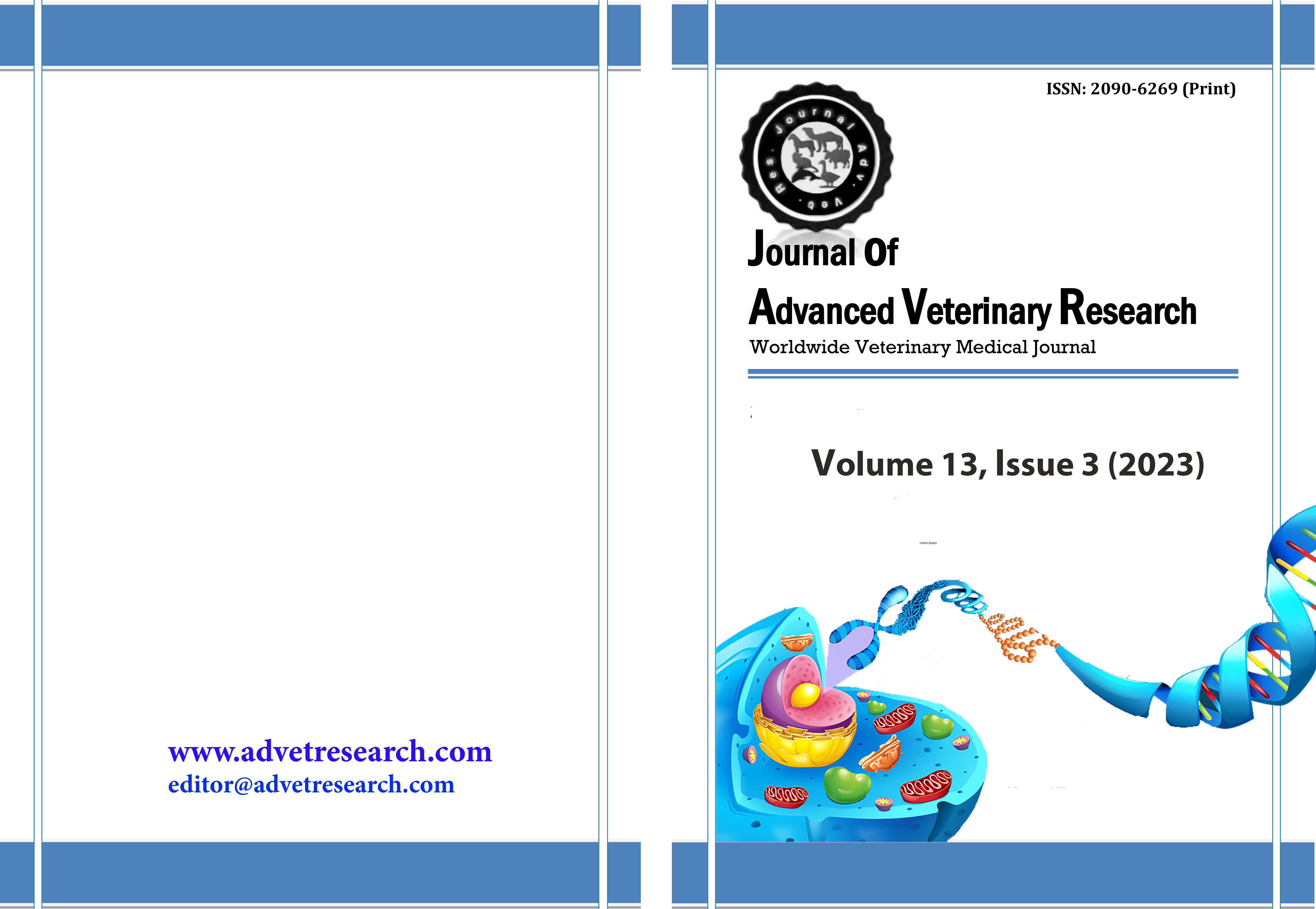Genes Contributed on Biofilm Forming Bacteria Incriminated in Various Disease Conditions in Cattle
Abstract
Biofilm production is a complex process that occurs as a series of molecular and physiological events; bacteria employ biofilms as a physical barrier to shield themselves from antimicrobial agents. In this study, biofilm-forming bacteria were isolated from the lung, heart, spleen, and liver of diseased cattle after slaughter.  Out of 210 examined samples, 82 samples were positive for biofilm forming ability either by Cong red binding assay or by tube method. The 82 isolates were identified as 27 E. coli strains belonging to O146:H21, O26:H11, O55:H7, O111:H2, O127:H6, O124:H2, O153:H1, and O111:H4, 23 isolates were identified as S. aureus, 15 as K. pneumoniae belonging to K1(HVKP), K2 (HVKP), K1 (CKP), and K2 (CKP) and 3 strains as K. oxytoca. Besides, 14 strains were identified as P. aeruginosa belonging to O6 (G), O11 (E), and O2 (B). Results showed that E. coli and P. aeruginosa isolates were positive for all tested biofilm-related genes whereas mkrA and spaA genes were the most commonly detected genes among K. pneumoniae and S. aureus isolates, respectively. Isolates showed a high level of antimicrobial resistance (AMR) to most tested antimicrobial agents. Macroscopical examination of the affected organs showed that the lung lost its spongy texture; the spleen was darkened and enlarged in addition to congestion of the liver and heart. Microscopical findings showed that the liver and heart were congested with leucocytic cells infiltrations while the lung showed peribronchial hypercellularity, excessive interstitial and alveolar cellular infiltration with severe congestion and degeneration of alveolar epithelial cells, destruction of alveoli with lymphocytic cells infiltration and collapsed alveoli with fibrous tissue proliferation while spleen exhibited marked congestion with aggregation of bacterial colonies either focal or diffuse, necrosis was also detected.
Â
Downloads
Published
How to Cite
Issue
Section
License
Copyright (c) 2023 Journal of Advanced Veterinary Research

This work is licensed under a Creative Commons Attribution-NonCommercial-NoDerivatives 4.0 International License.
Users have the right to read, download, copy, distribute, print, search, or link to the full texts of articles under the following conditions: Creative Commons Attribution-NonCommercial-NoDerivatives 4.0 International (CC BY-NC-ND 4.0).
Attribution-NonCommercial-NoDerivs
CC BY-NC-ND
This work is licensed under a Creative Commons Attribution-NonCommercial-NoDerivatives 4.0 International (CC BY-NC-ND 4.0) license




